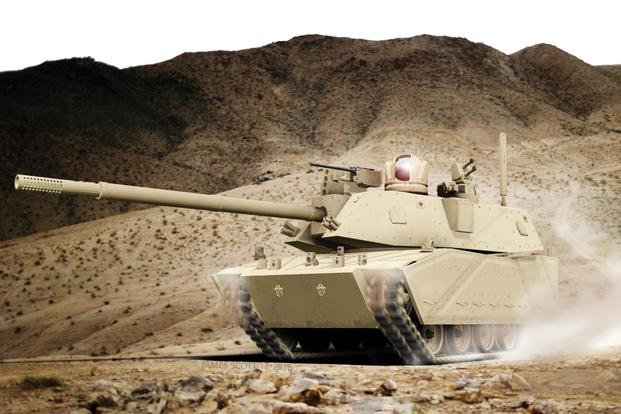The U.S. Army's top official said Tuesday that the service's Next Generation Combat Vehicle program will focus first on fielding a replacement for the Bradley fighting vehicle.
Building a fleet of NGCVs to replace the M1 tank and the Bradley is the Army's second-highest modernization priority.
Over the last six months, Army leaders have stressed that NGCVs will have to be manned as well as unmanned, but Army Secretary Mark Esper revealed that the service will focus first on the "new infantry fighting vehicle, which is what the first Next Generation Combat Vehicle will be."
"It should provide us with a great deal of capability with our armored formations," Esper told an audience at the Atlantic Council.
This is not the first time the Army has attempted to replace the Cold War-era infantry fighting vehicle. It was four years ago that the service killed its last effort to replace the Bradley, known as the Ground Combat Vehicle program.
The Army launched the GCV program in 2009 shortly after the Pentagon canceled the service's Future Combat Systems program -- a multi-billion-dollar modernization effort that included manned ground vehicles designed to replace the M1, Bradley and other legacy combat vehicles.
Replacing the Bradley then became the Army's top modernization priority. The first prototype was designed to carry a nine-soldier squad; it featured a hybrid drive engine for greater power and an active protection system designed to defeat enemy missiles. It was heavy, though, with a base weight of approximately 53 tons.
In the end, mandatory defense spending cuts under sequestration forced the Army to cancel the GCV program in 2014. Lawmakers cut GCV funding by $492 million in the fiscal 2015 budget. The move left the Army with $100 million instead of the $592 million it had requested to continue developing the program.
Army officials, however, are determined to replace the Bradley. This time around, leaders have pledged to deliver the first manned and unmanned prototypes of NGCV by 2019.
It will feature artificial intelligence to provide driver-assisted, 360-degree situational awareness as well as computer-assisted targeting and acquisition capabilities to help crew members make quicker decisions in combat, Army officials say.
The NGCV is one of the Army's six modernization priorities, which also include long-range precision fires, Future Vertical Lift, a mobile network, air and missile defense, and soldier lethality.
"This is an exciting time as the Army faces many challenges," Esper said. "It's going to take a great deal of leadership. It's going to take tough decision-making. It's going to take persistence by me and my leadership team."
-- Matthew Cox can be reached at matthew.cox@military.com.













